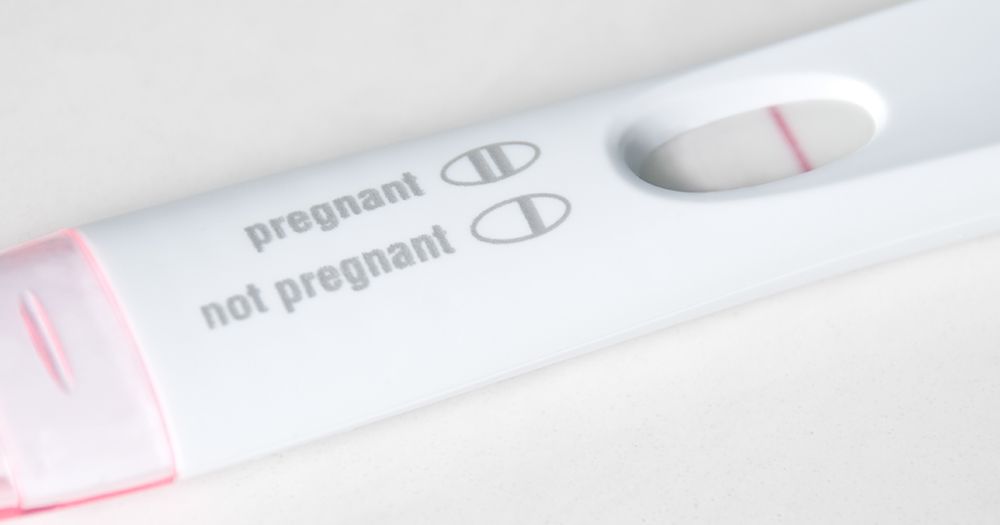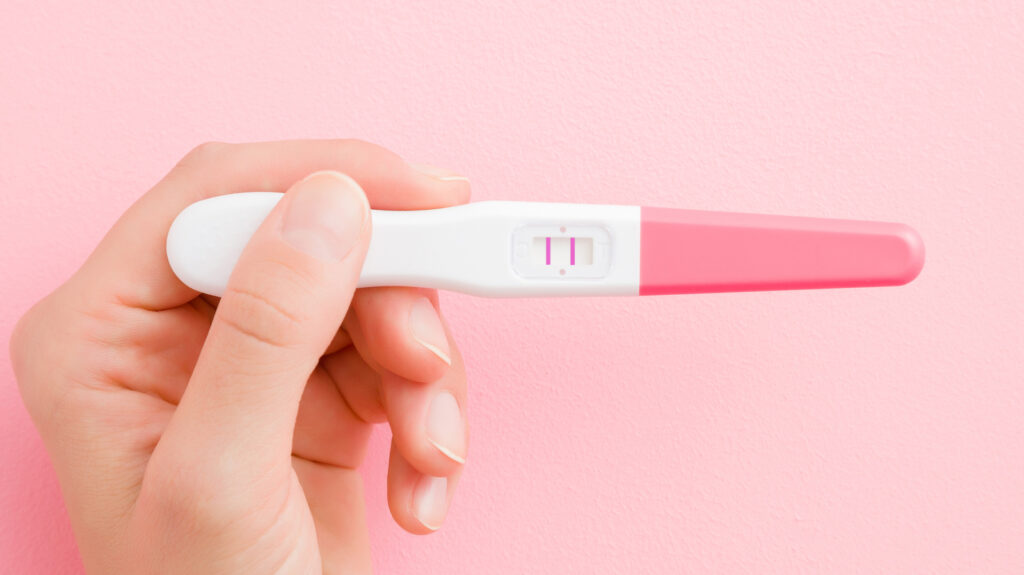Can You Get Pregnant From A Toilet Seat? Fact Or Fiction
No, you cannot get pregnant from a toilet seat. Pregnancy occurs when sperm fertilizes an egg, and for this to happen, specific conditions must be met. Sperm is fragile and requires a specific environment to remain viable, which is typically found within the female reproductive system.
The conditions on a toilet seat are not conducive to sperm survival, and the odds of sperm successfully traveling to an egg and fertilizing it in such a scenario are exceedingly low. The myth of toilet seat pregnancy is just that – a myth. While the idea may persist due to misunderstanding and fear, it’s not supported by scientific evidence. However, maintaining good hygiene in public restrooms is important, but the risk of pregnancy from a toilet seat is negligible.
How Does Human Reproduction Work?

Human reproduction is a complex but fascinating process that leads to the creation of new life. At its core, it involves the fusion of genetic material from two individuals, typically a male and a female. The primary actors in this process are the sperm and the egg.
The Male Reproductive System
The journey of human reproduction begins with the male reproductive system. The primary organs involved are the testes, which produce sperm, and the penis, which delivers sperm to the female’s reproductive system during sexual intercourse. Here’s how it works
Sperm Production: The testes produce millions of sperm daily. These sperm are constantly being replenished. The process is known as spermatogenesis. This intricate process takes approximately 64 days to reach completion.
It all begins with immature cells called spermatogonia, which undergo a series of divisions and transformations to ultimately become mature sperm cells. This journey through various stages is what constitutes the fascinating process of spermatogenesis.
Ejaculation: During sexual intercourse, sperm are mixed with seminal fluid from the prostate gland. This mixture, called semen, is ejaculated from the penis into the female’s reproductive tract.
Sperm’s Journey: Sperm are highly motile and swim through the female’s reproductive tract to reach the egg for fertilization.
The Female Reproductive System
The female reproductive system plays a crucial role in human reproduction. The key organs involved are the ovaries, where eggs are produced, and the uterus, where fertilization and pregnancy occur.
Ovulation: Each month, an egg is released from one of the ovaries during ovulation. The egg is then captured by the fallopian tube.
Fertilization: If sexual intercourse occurs around the time of ovulation, sperm can reach the egg in the fallopian tube, leading to fertilization.
Implantation: The fertilized egg, now called a zygote, travels to the uterus and implants in the uterine lining, where it develops into an embryo and, eventually, a fetus if pregnancy occurs.
What Are The Role of Hormones?
Hormones play a crucial role in regulating the reproductive process. In males, the hormone testosterone is responsible for sperm production and the development of male sexual characteristics. In females, the menstrual cycle is regulated by hormones like estrogen and progesterone, which control ovulation, menstruation, and pregnancy.
Fertilization and Pregnancy
Fertilization occurs when a sperm successfully penetrates the egg. This results in the formation of a zygote with a complete set of chromosomes, half from the mother and half from the father. The zygote begins to divide and develop into an embryo, which eventually implants in the uterine lining. If the embryo successfully implants, pregnancy begins.
The Importance of Timing
Human reproduction is highly dependent on timing. Fertilization can only occur during a specific window of time when both the egg and sperm are viable. The fertilized egg must then implant in the uterus at the right time for pregnancy to commence.
Preventing Pregnancy
Understanding the intricacies of human reproduction is crucial for those who want to prevent pregnancy. Contraceptive methods, such as condoms, birth control pills, and intrauterine devices (IUDs), work by interfering with the fertilization process or preventing the implantation of a fertilized egg in the uterus.
In Vitro Fertilization (IVF)
In some cases, couples facing fertility issues may opt for assisted reproductive technologies like in vitro fertilization (IVF). IVF involves fertilizing the egg with sperm outside the body and then implanting the fertilized embryo in the uterus.
What are the Factors That Increase the Risk of Pregnancy From a Toilet Seat
Toilet seats are not a conducive environment for sperm survival. They lack the necessary conditions for sperm to remain viable.
Moreover, sperm are delicate and have a limited lifespan outside the body. They quickly lose their mobility and fertilization potential when exposed to the environment.
However, sperm rely on a specific environment within the female reproductive system to travel towards the egg. On a toilet seat, they have no means of reaching an egg.
In addition, public restrooms are cleaned regularly, which includes disinfection procedures. These cleaning agents further diminish the chances of sperm survival.
Sperm are highly sensitive to temperature, moisture, and pH levels. Toilet seats do not provide the optimal conditions for sperm to thrive.
To fertilize an egg, sperm must encounter a receptive egg within the female reproductive system. This opportunity doesn’t exist on a toilet seat.
Even if, against all odds, sperm were present on a toilet seat, the likelihood of them successfully reaching and fertilizing an egg is extraordinarily low.
What Does It Take to Get Pregnant?
Getting pregnant is a complex process that involves several crucial factors and conditions. To understand the requirements for pregnancy, it’s essential to explore into the various elements that play a role in the conception of a new life.
Ovulation
Ovulation is a fundamental element of the pregnancy process. It refers to the release of a mature egg (ovum) from one of the ovaries. Ovulation typically occurs in the middle of a woman’s menstrual cycle, roughly two weeks before the start of her next period.
Timing
The timing of sexual intercourse is critical. To increase the chances of pregnancy, it’s advisable to engage in sexual activity during the fertile window, which includes the days leading up to and during ovulation. Sperm can survive in the female reproductive tract for several days, so having intercourse before ovulation is also considered beneficial.
Sperm Viability
Sperm, the male reproductive cells, play a pivotal role in fertilization. For pregnancy to occur, sperm must reach and penetrate the egg. The viability of sperm is influenced by several factors, including their motility, count, and overall health. Healthy, motile sperm have a better chance of successfully fertilizing an egg.
Fallopian Tube Function
The fallopian tubes are crucial in the reproductive process. After ovulation, the egg is captured by the fallopian tube. Fertilization usually occurs in the fallopian tube when sperm meet the egg. After fertilization, the resulting zygote begins its journey towards the uterus for implantation.
Healthy Uterine Lining
For successful implantation and pregnancy, a healthy uterine lining is essential. The uterine lining undergoes changes throughout the menstrual cycle, becoming more receptive to the implantation of a fertilized egg during the luteal phase.
Hormonal Balance
Hormones play a significant role in regulating the menstrual cycle and ovulation. Imbalances in hormones, such as those associated with conditions like polycystic ovary syndrome (PCOS) or irregular menstrual cycles, can affect fertility.
Age and Fertility
A person’s age can also impact fertility. Female fertility typically peaks in the early twenties and gradually declines with age. The late thirties and early forties often mark a significant decrease in fertility, and the risk of complications, such as chromosomal abnormalities, increases.
Health and Lifestyle
Health and lifestyle factors can affect fertility. Maintaining a healthy weight, avoiding smoking, and moderating alcohol consumption are associated with improved fertility. Additionally, underlying medical conditions, such as diabetes or thyroid disorders, can impact reproductive health.
Infertility
If pregnancy does not occur after a year of regular, unprotected intercourse, it is advisable to consult a healthcare professional. Infertility can result from various factors, and a medical evaluation can help identify the cause and potential treatments.
What Are The Practical Measures To Maintain Hygiene?

Maintaining proper hygiene in public restrooms and shared spaces is essential for safeguarding your health. While the risk of pregnancy from inanimate objects, like toilet seats, is virtually non-existent, there are genuine concerns related to hygiene and the potential transmission of infections in these environments.
Use Protective Barriers
Many public restrooms provide toilet seat covers or have toilet paper available. Using these as a protective barrier can minimize direct contact with potentially contaminated surfaces. Place a seat cover or a few layers of toilet paper on the seat before use.
Hand Hygiene
One of the most effective ways to prevent the spread of germs is thorough handwashing. Use soap and water to wash your hands for at least 20 seconds after using the restroom. Proper hand hygiene is vital in reducing the risk of infection.
Avoid Direct Contact
Minimize direct skin contact with surfaces in high-traffic public restrooms. Use your foot or elbow to flush the toilet, if possible. When exiting the restroom, use a paper towel to open the door, or use an elbow or shoulder to push it open.
Carry Hand Sanitizer
In situations where handwashing facilities are unavailable, carrying a small bottle of hand sanitizer with at least 60% alcohol can be a valuable hygiene measure. Apply it to your hands and rub them together until dry.
Be Mindful of Personal Items
Avoid placing personal items, such as bags or clothing, on restroom surfaces. These items can pick up germs and transfer them to other surfaces, including your hands.
Maintain Good Personal Hygiene
Your personal hygiene practices also play a role in minimizing health risks. Ensure that you regularly bathe or shower, change your clothing, and use proper hygiene products.
Dispose of Hygiene Products Properly
Dispose of hygiene products, such as sanitary napkins and tampons, in designated containers provided in restrooms. Do not flush these items, as they can clog plumbing and sewage systems.
Stay Informed
Stay informed about any specific hygiene recommendations or alerts related to public restrooms in your area. Local health authorities may provide guidance on maintaining restroom hygiene.
Use Discretion
If you encounter a public restroom that appears to be in poor condition or unsanitary, use your discretion. It’s better to seek an alternative restroom if possible, as cleanliness and hygiene are essential for your well-being.
Be Considerate
Being considerate of others is an important aspect of restroom hygiene. Ensure that you leave the restroom in a clean and sanitary condition, following the same hygiene measures you expect from others.
FAQ
How long can sperm live on a toilet seat?
Sperm typically cannot survive for an extended period outside the human body, and the conditions on a toilet seat are not conducive to their survival. Sperm usually die within a few minutes to an hour in such an environment.
How many drops of sperm are needed to get pregnant?
It only takes one viable sperm to fertilize an egg, so the quantity of sperm needed is minimal. Even a single sperm cell can potentially lead to pregnancy.
Can sperm survive in a towel?
Sperm can survive for a short time on surfaces like a towel, but their lifespan outside the body is limited. They are vulnerable to drying out and environmental factors.
Can sperm be washed away with water?
Yes, rinsing or washing away sperm with water can reduce the chances of pregnancy. However, it’s not a foolproof method, and it’s best to use contraception if avoiding pregnancy is a concern.
Can sperm pass through 2 layers of clothing?
The chances of sperm passing through two layers of clothing and leading to pregnancy are exceedingly low. The layers act as barriers that significantly impede sperm mobility and contact with the skin.
Can you get pregnant if only the tip goes in?
While the risk is lower, it is still possible to get pregnant if only the tip of the penis enters the vagina, as pre-ejaculate (pre-cum) may contain sperm. Practicing safe sex and using contraception are essential for preventing unwanted pregnancy in such situations.
Final words
Finally, the myth of getting pregnant from a toilet seat is just that—a myth. It’s essential to remember that pregnancy requires specific conditions for conception to happen, and these conditions are not met in a typical public restroom setting. Sperm are fragile, and the environment on a toilet seat is far from ideal for their survival and mobility.
By dispelling this myth, we can alleviate unnecessary anxiety and focus on accurate information. Pregnancy is a beautiful and complex process, and understanding it better can lead to a more informed and less anxious society. So, rest assured, you can’t get pregnant from a toilet seat.







